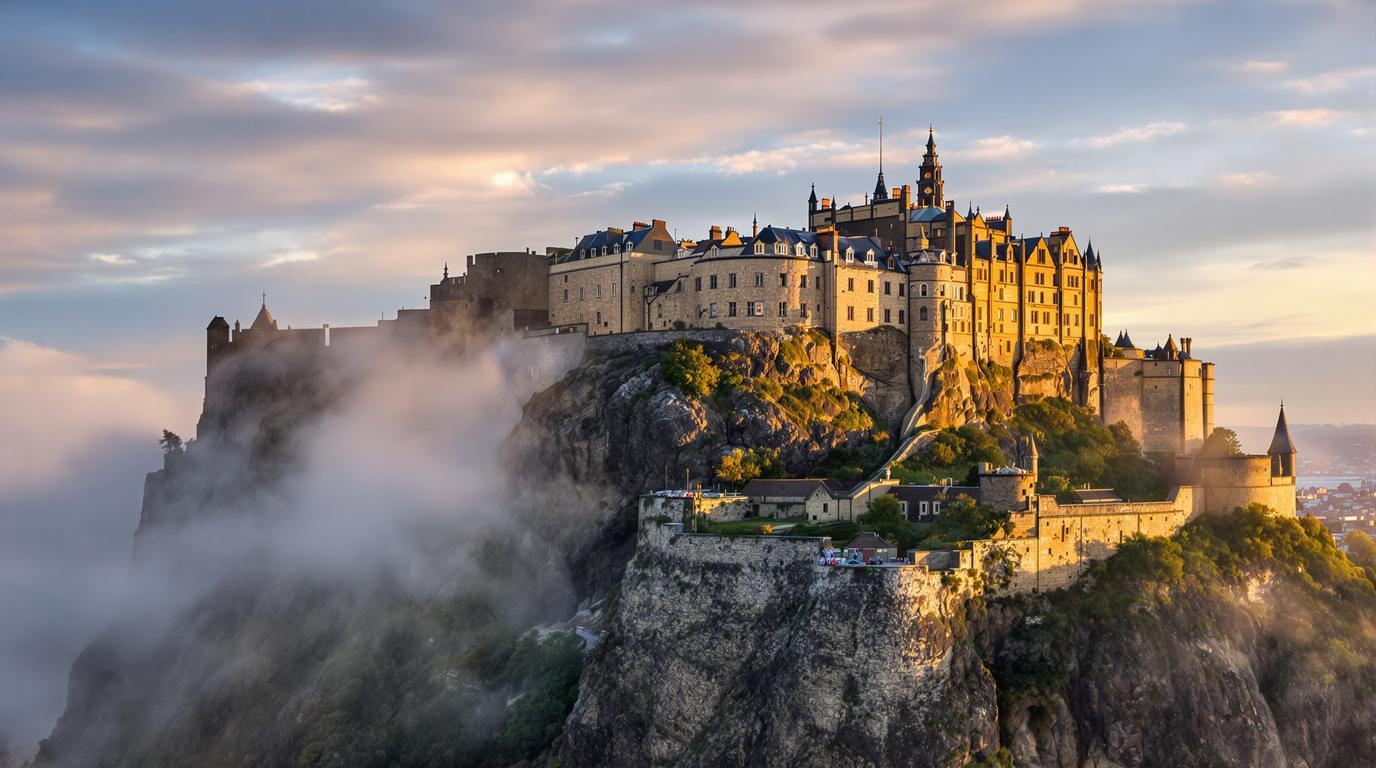Edinburgh’s enchanted landscape rises from ancient volcanic rock, where medieval spires pierce the misty Scottish skies and literary ghosts whisper tales from cobblestone closes. This isn’t just another European capital—it’s a city where 1,000-year-old castle walls have witnessed the birth of wizarding worlds and where writers have penned classics in unassuming cafés for centuries.
A castle that defies gravity
Perched dramatically atop an extinct volcano, Edinburgh Castle commands the city skyline with stone walls that have withstood 26 documented sieges throughout history. The massive fortress houses Scotland’s crown jewels and the Stone of Destiny, used in coronation ceremonies for generations of Scottish monarchs.
“Our castle doesn’t just sit on the hill—it grows from it. The volcanic rock and the fortress became one over the centuries,” explains Malcolm Fraser, local historian and tour guide. “When you stand on the esplanade, you’re literally touching where Scottish history was forged.”
The world’s first literary urban landscape
Edinburgh was named the world’s first UNESCO City of Literature in 2004, and for good reason. Wander the city where Robert Louis Stevenson, Sir Walter Scott, and Sir Arthur Conan Doyle found inspiration. The Writers’ Museum celebrates these literary giants in an atmospheric 17th-century building tucked away in Lady Stair’s Close.
For Harry Potter fans, Victoria Street’s curved row of colorful shops served as J.K. Rowling’s inspiration for Diagon Alley. The author penned the early novels in local cafés, including The Elephant House, where she gazed at the castle while creating her magical world.
A tale of two cities
Edinburgh is literally split in two: the medieval Old Town with its tangled wynds (narrow passages) and towering tenements, and the elegant Georgian New Town with its ordered grid of neoclassical grandeur. The stark contrast between these UNESCO-protected districts creates a fascinating architectural dialogue that spans centuries.
Between them lies Princes Street Gardens, once a putrid loch where witches were drowned, now transformed into a peaceful green haven. This dramatic transformation mirrors Edinburgh’s journey from medieval fortress to enlightenment capital.
The city beneath the city
Beneath Edinburgh’s streets lies a hidden world of vaults and forgotten passages. The most famous, Mary King’s Close, was sealed during a plague outbreak in the 17th century and rediscovered centuries later, preserved almost exactly as residents left it.
“We call Edinburgh the ‘double city’—what you see above ground is only half the story,” says Laura Davidson, underground tour guide. “Below your feet are layers of history where people lived, worked and died, now frozen in time.”
Nature’s throne room
Arthur’s Seat, a 350-million-year-old extinct volcano, offers panoramic views that rival those of more famous natural landmarks. This wild highland landscape in the heart of the city provides a breathtaking hiking experience just minutes from the Royal Mile.
The 640-acre Holyrood Park surrounding Arthur’s Seat contains lochs, glens, basalt cliffs, and ruins that make it feel like the Scottish Highlands were magically transported into the city center.
A festival city like no other
Each August, Edinburgh’s population doubles as the world’s largest arts festival transforms every available space—from historic theaters to basement pubs and atmospheric courtyards—into performance venues.
The spectacular Royal Edinburgh Military Tattoo unfolds against the castle backdrop, while the winter holidays bring magical markets and Hogmanay, Scotland’s legendary New Year celebration that makes Times Square look tame by comparison.
Edinburgh doesn’t just preserve its past—it lives in dynamic conversation with it. Each cobblestone underfoot has witnessed centuries of drama, creativity, and resilience. When you visit, you’re not just seeing another European capital; you’re stepping into a living story that continues to inspire the world’s greatest storytellers and creators.
